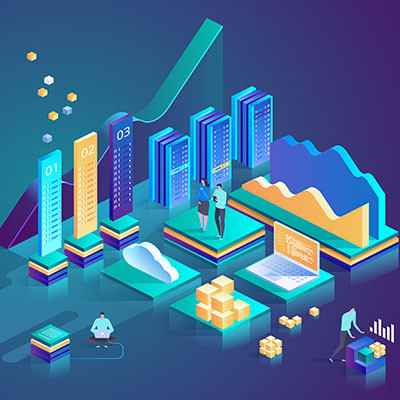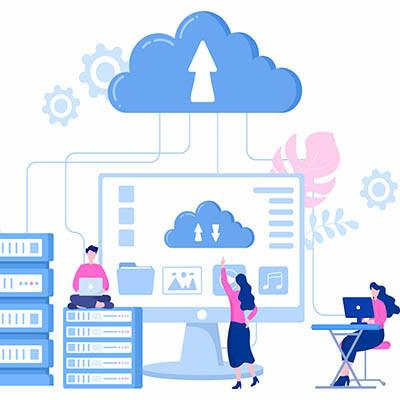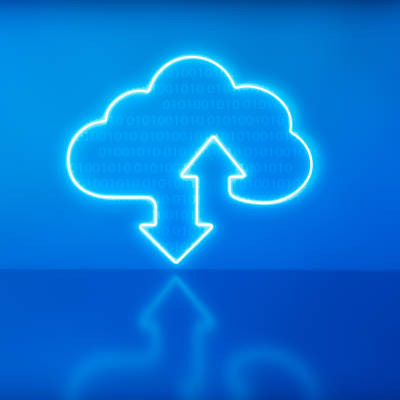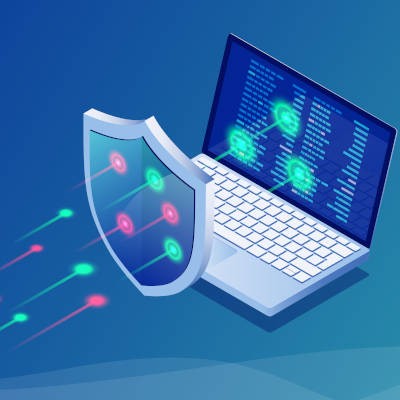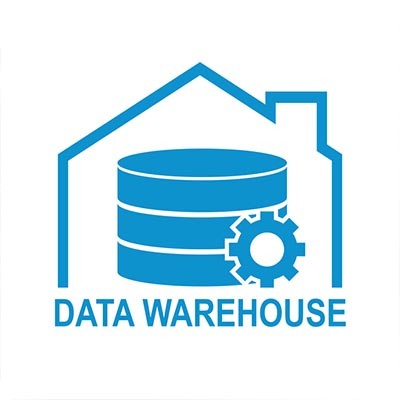To keep your business running smoothly, even if something goes wrong—like a power outage, cyberattack, or other disaster—you need a reliable way to protect your data. That’s where data backup comes in. It’s important to make sure your backup is thorough and trustworthy so you can recover if things go south.
k_Street Consulting, LLC Blog
Imagine giving every single person you work with a key to your house. Would you do it? Probably not, right? What if someone lost their key or had it stolen? You wouldn’t want to take that risk.
So, it stands to reason that if you can’t trust the people you work with every day with a key to your house, you wouldn’t want them to have access to all of your data; or your business’.
Collaboration is as important as ever, if not more so, to businesses of any size… and with so much work today being done digitally, this collaboration needs to be reliable. Add in the fact that so many people work remotely as often as they do, and it should be clear that all businesses need a means of securely collaborating as part of their successful operations.
Cloud computing as a whole has been one of the most transformative technologies for businesses. With so many companies (upward of 90 percent of modern businesses) using some type of cloud computing, more companies than ever are really leaning into the technology and use it for mission critical business processes. Let’s take a look at some of the ways businesses can secure their cloud resources.
Nostalgia is a powerful force. It can drive us to look to the past for things we once loved, such as the music we listened to over the years. However, what if the music you loved was lost forever?
This could be the case for many, as older hard drives that archive this music have been discovered to have failed. Let’s examine the situation to see what lessons any small-to-medium-sized business can learn.
With collaboration playing center stage for most businesses, it’s no small wonder that file sharing is such a priority for SMBs. If you want to establish solid file-sharing practices, you need the right solutions. Today, we want to explore four ways you can establish an efficient and secure file-sharing platform.
It isn’t a secret that working with different times in a spreadsheet can be a real pain… even if you’re just trying to add them all up. Fortunately (and a little unsurprisingly), this is because these programs have a specific function to accomplish this.
Let’s review the process you should follow in your spreadsheet program, whether you use Microsoft Excel or Google Sheets.
As technology continues to gain prominence in healthcare, it plays an increasingly vital role. Advancements in technology have allowed the healthcare industry to stabilize costs, improve access, and personalize care delivery—objectives that were challenging in the past. These benefits come with a potential downside: data privacy issues, which are becoming more concerning as technology advances.
Today’s business needs to be able to share files and data securely and efficiently. This process may seem straightforward, but there are a lot of options that the business owner or manager needs to understand. In today’s blog, we look at some steps that will help you create a strong and secure file-sharing system.
There’s no doubt that data is valuable. It can improve many different aspects of a business, most notably operations, customer relations, and marketing. The more data you have, the more specific actions you can take to improve your business. But it can also be a real problem if you don’t have a plan for managing it. Let’s discuss some problems your data can present and how to avoid them.
All businesses use email to communicate, but too many organizations haven’t jumped on the encrypted email bandwagon yet. Encryption is incredibly helpful to keep networks and infrastructure secure, and it can do the same for your email solution. In fact, it is likely required to ensure the secure transfer of critical and sensitive information.
A successful business thrives on building beneficial relationships, which generates a lot of data and contracts that need to be efficiently shared and stored. While this might seem straightforward, leveraging today’s technology can significantly cut down on filing costs and enhance file-sharing efficiency. Let’s explore how.
Big data has become an invaluable asset, not just for large corporations but also for small businesses. Using the vast amounts of data your business creates to help you make more effective decisions is easier than ever. In this month’s newsletter, we’ll look at how small businesses are tapping into the power of big data:
Data is at the heart of all successful modern businesses. The information you collect and store can help you make better decisions, plan better strategies, and gain a competitive advantage. Let’s look at how your raw data can be refined into more meaningful insights through the use of business analytics tools.
Hackers are always on the lookout for personally identifiable information, or PII, as it’s an immensely lucrative resource. You’ll need to protect it if you want your business to continue operating safely and efficiently. Let’s go over what PII entails and what kinds of data you might find under this term.
Firewalls are a mainstay of network security. At its core, the firewall acts as a barrier between a trusted internal network and untrusted external networks, such as the Internet. Its primary function is to monitor and control incoming and outgoing network traffic based on predetermined security rules. Think of the firewall as a gatekeeper scrutinizing every packet of data that attempts to pass through. Let’s take a look at the different types of firewalls and some of their key functions.
Your business is likely subject to certain compliance laws and regulations depending on the type of data you collect from your clients or customers. Today, we want to emphasize the importance of your business considering regulation and compliance when managing its data and IT resources, as without doing so, you run considerable risk.
Your business’ data holds incredible potential for helping you improve operations, but only when it is leveraged properly. To this end, you have to identify specific metrics that you are working toward and establish how these metrics are helping you make strides forward. IT offers plenty of metrics to help you make better decisions about operational efficiency.
Cybersecurity is crucial for everyone to focus on, both in the professional environment and in their personal lives. That’s why I wanted to put together a list of cybersecurity practices you should encourage your team to follow when they aren’t in the office or working remotely, when their time is theirs.
A digital twin could arguably be seen as a somewhat niche technological innovation. Regardless, they are an invaluable resource to quite a few industries that help the businesses that use them optimize their processes. Let’s go over what a digital twin is, and how it helps a few different business types meet their needs.
All it takes is one oversight to potentially undo any benefits your cybersecurity protections and other best practices may deliver. For instance, even if you have things like multifactor authentication in place, a phishing scam or even some malware varieties could potentially give an attacker access to your email… and all the data your messages contain, just sitting in your inbox.
The big game was this past Sunday, and if you are like millions of other people, you tuned in to see the spectacle of the game, the halftime show, and Taylor Swift. Behind the scenes, the National Football League has been utilizing emerging technologies to help them solve some of their biggest problems. Let’s go into three ways the NFL is using technology to improve their product.
Ensuring the safety and security of digital data is a key component to sustaining a smooth functioning business. In light of the increasing reliance on digital information, the implementation of robust Data Backup and Disaster Recovery strategies have become more important than ever. This month, we aim to discuss key components of an effective disaster recovery strategy, emphasizing the importance of safeguarding business data backups.
Ensuring the security of your data is extremely important. If you are a frequent reader of this blog, you know that any unauthorized access to sensitive information can result in severe consequences for your business. The problem is that today’s cybercriminal tactics have become increasingly sophisticated, posing a constant challenge to organizational data security. Today, we look at six things you can do to keep your data secure.
Recently, artificial intelligence has become a widely discussed topic among businesses of all sizes. According to a Forbes survey, 97 percent of respondents see potential benefits in incorporating AI into their operations. Despite its pervasive integration into modern life, however, it's crucial to recognize that AI is a human creation and, as such, is susceptible to bias.
Nowadays, data security, especially on files that are attractive to hackers, has to be a priority. Many businesses have deployed a Virtual Private Network (VPN) to help them improve their data security. If you haven’t, understanding the myriad of benefits that businesses get from deploying a VPN will put in perspective just how useful the VPN can be.
The cloud is an amazing tool for just about any business, allowing for countless benefits that span endless possibilities. However, because it involves the Internet and hosting data in an online environment, there are security challenges that naturally come about as a result of utilizing it. Let’s consider some of the security mistakes that businesses can experience while using the cloud.
In today’s interconnected world, an organization dedicated to fraud protection like the United States Federal Trade Commission is vital, especially when you consider how advanced digital technology has become and continues to grow. The FTC works to ensure consumer data stays protected by the businesses to which they entrust it. Let’s look at the Safeguards Rule and what your business should know about it.
Whether we want to admit it or not, the future can be scary, and even the most powerful technology out there is not enough to keep today’s data preserved while it’s in storage. Decades from now, or perhaps even a century, are you confident that your data will be available and ready to use? We’re here today to discuss why you shouldn’t be extremely confident in your hard drives.
Data is what makes your business function, and if you’re not careful, you might find yourself without it due to a hardware failure, malware attack, or even human error. You need to maintain and implement a powerful data backup solution to ensure that your business can bounce back following a disaster, and this platform should keep your data as safe and accessible as possible in the process. Here’s how you can implement such a solution.
The modern business creates and deals with a lot of data, and has for some time. For most of that time, this data has just been ignored, but recent developments in analytics and business intelligence has made this data extremely valuable. In order for your analysts to make accurate determinations they’ll need access to a wide variety of data from a myriad of sources. This is where data warehousing comes in.
The growth that digital storage has seen over the past several decades is immense. In that time most data has been stored on hard disk drives (HDD). Now with solid-state drives (SSD) being more affordable than ever, it’s no surprise that most computers are preferring this faster and less fragile model. Today, we wanted to highlight that fragility and try to expose some variables that help you tell if your HDD is about to fail.
The one thing about data backup is that it seems like it is pretty simple: You have data, you copy it and store it should something happen to your original. Sure, that’s the basic makeup of a data backup, but if you want a backup you can really rely on, you need it to be faultless. Enter Backup and Disaster Recovery.
Every organization that uses technology has policies and procedures that dictate the way that the people that work there have to deal with the technology that they give them. When you hire new employees, you need to be able to get them to understand that they have a significant role to play in the way that the business operates. Let’s go through some of the considerations you need to explain to your new employees so they can better understand how to interact with business technology.
When it comes to your network and its security, you cannot give all of your users access to all of your assets. It’s just not a good practice, and doing so can potentially put your resources at risk. Let’s discuss how network segmentation can make a world of difference for the integrity of your network and the data found on it.
If Edgar Allan Poe worked in an office, here’s what one of his works would sound like:
True!—nervous—very, very dreadfully nervous I have been and am, but why will you say that I am mad? The office had sharpened my senses—not destroyed—not dulled them. Above all was my sense of hearing. I heard all things in heaven and on earth and many things in…the other place. So, how then am I mad, especially when I can so healthily and calmly tell you this story?
With cryptocurrency having its heyday over the past few years and the increased attention it has brought the blockchain, it should be no surprise that another trend has arisen. NFTs. or non-fungible tokens, have been all the rage as of late… but is this trend something that might apply to businesses?
How do you look at your organization’s data? The answer will likely be the same as how you look at your organization. The businesses that do more to use their data to improve their business’ process, policies, and strategies, are the businesses that, by-in-large, are the ones that grow more rapidly and see more operational efficiency. This month, we thought we would look at four ways your business can use their data to actively improve its operations.
When your business experiences a significant disruption, a disaster recovery plan is critical to getting back to normal. Some disasters are the result of external threats, while others come about from internal problems with your company’s operations. Here are some things you should consider when looking into potential disaster recovery solutions to help you get through a data disaster.
We frequently encourage our clients to consider the cloud as a viable option for their data storage needs, be they someplace to store a copy of their data backup or even their primary storage option. Having said that, it is important that we clarify that this cloud storage needs to be secure. Let’s explore how to ensure that much is true.
These days it can seem like the gap between small business and large enterprise is so massive that it is impossible to close, but the truth is the exact opposite. Through the smart application of business technology, you might be surprised by how much you can improve your operations and stand out from the crowd. It all boils down to tracking your business for analytics, ensuring that you provide an excellent service or experience to your customers, and implementing the right technology solutions.
Earlier this year, there was a string of high-profile ransomware attacks leveraged against major companies. Now, the United States has issued an order that dictates guidelines for how to patch various vulnerabilities in affected systems within federal agencies and organizations. It’s a huge move in an effort to stop hackers and other cyberthreats from becoming more serious problems in the future.
We are consistently adamant that businesses have a comprehensive data backup strategy to help secure its operational continuity. The threat environment in which we find ourselves at the present time only reinforces the importance of such a backup strategy. This month we thought we’d take a few minutes to review what makes a business’ backup platform comprehensive.
Per our role as cybersecurity professionals, part of our responsibility is to put the developing threats out there in the world into perspective for the clientele that we serve. After all, with so many modern threats seeming to border on science fiction, it is only natural for smaller organizations to assume that their size will protect them from such attacks through simple lack of interest—or even that such threats will never be used practically at any significant scale. Unfortunately, these assumptions are too often mistaken.
Contemporary movies are filled with high-stakes cybercrime, where a lovable criminal syndicate breaks into a company’s systems to help wreak havoc on the true villains of the film, all the while exposing the company’s dirty laundry. Naturally, this idea can be frightening for any business, whether or not they have any dirty laundry to air out—after all, nobody wants a ruined reputation—and is unfortunately less and less of a fantasy all the time.
Novelty holidays have been all the rage for the past couple years. The thing is that if you are going to celebrate World Kimchi Day on November 22 or its sister holiday, World Cabbage Day on February 17, you either really like cabbage, or you really like holidays. With so many people using technology as a major part of their life and business, it’s no surprise that it is well represented on the holiday calendar. You have a few we’ve already missed: National Technology Day on January 6, Data Privacy Day on January 28, and National Clean Out Your Computer Day on February 8, but there are three important IT “holidays” this month. Let’s take a look at them now.
With cloud computing being utilized by a majority of businesses nowadays, it’s not as big of a surprise when one wants to move files from a locally-hosted server to a cloud server; or, from a cloud server to a new cloud server. This presents a fair amount of problems that you have to be mindful of if you want to move the data and applications over properly. Today, we’ll take a look at some problems you may face, and how to make sure they don’t weigh down your next cloud migration.
With a business’ data being such a priority nowadays, protecting it against all circumstances needs to be appropriately attended to. One fundamental component of this protection is the implementation of a proper backup strategy. Let’s go over the most foundational element of a successful backup, and how we recommend businesses to accomplish it: redundancy.
Whenever you ponder the purchase of a new computer, one important specification that you likely consider is its data storage. This was especially the case when you considered a new machine for family use—there are a lot of documents and photos to store, and any kids you have will want to fill it with games and other apps. Nowadays, it’s a little different. Rather than focusing on storage, you’ll want to focus on the computer’s speed. Let’s get into it a little further.
Today’s business has to prioritize its data security. There are endless examples of businesses that haven’t done enough. Some aren’t around anymore. To help you build a strategy, we’ve put together four questions that need to be asked to give you a chance to outwit and overcome the endless threats your company could run into online.
We all use computers to run our businesses every day, and data has become a key factor in what most businesses do. Even smaller businesses have begun to use their data for strategic purposes, and in doing so have started a trend that has taken the world by storm. Let’s take a look at the data services that are designed to inform business owners and decision makers on how their business is actually working and how to improve operational effectiveness.
Cloud computing is a tremendous tool for modern businesses. It provides users with anytime-anywhere access to the applications, storage, and processing they need to keep business running efficiently and productively. It is billed as-a-service, meaning that it also comes with the flexibility and scalability most businesses need to control their computing costs. Unfortunately, it’s not always that cut and dry. Today, we are going to look at the hidden costs that businesses might see if they select to use cloud resources.
We’re halfway through the year, and I don’t think anyone expected 2020 to go the way it has. Many business owners are being extra cautious about their spending and doing what they can to prevent unexpected interruptions to their business. One costly interruption all businesses need to continue to prevent is data loss.
When a company operates primarily via the Internet, there seems to be an inherent trust that their audience naturally has. There’s little-to-no doubt that all promises will be kept and that all data shared with them will be fully secured, but is this confidence appropriately placed? While we can’t speak to the promises these companies make, we can weigh in on some common data security practices.
“It’s time to do some spring cleaning! It’s been put off long enough!”
It’s easy to let things pile up to deal with them at a later time, especially when you are on strict timelines and only have so many resources. That’s why my desk can look like a disorganized disaster some of the time (but in my defense, it cleans up very well when it needs to).
Cloud computing is generally accepted today as a good option for businesses. While we aren’t arguing that this isn’t the case, we wanted to make sure that your cloud use--actual or theoretical--was sufficiently secure. Many will neglect to consider how secure their use of cloud solutions is, which is something that we’d like to fix.
Businesses today rely on a lot of data, and of course, this data typically isn’t stored all in one place, or even in the same format. Normally, this would make trying to manage this data far more complicated, but modern organizations have a way to simplify their data management: data virtualization.
The cloud is the new standard for businesses to handle their data storage and software distribution needs. We have a lot of experience in assisting our clients with the services they use via the cloud, and beyond that, most people are somehow connected to “the cloud” in some shape or form. However, this does raise a few questions about how secure our data actually is.
Data privacy is a huge issue right now, and with so many organizations possessing individual information, the issue isn’t going to be going away. Some of the biggest and most reputable organizations in business today have been breached in the past several years and it has put a new onus on individual data protection. Let's take a look at individual data privacy and what can be done to protect yourself online.
Many businesses are capitalizing on the vast amount of benefits Managed IT services can bring to the table. These service providers are able to assist your business in obtaining, and managing the technology that you rely on. Working with one of these providers can help your business simplify data management practices, as well as make them much more secure. Today we will go over how they are able to do so.
Data is everywhere. Nowadays, effectively everything we do produces data of some kind - especially where your business is concerned. If leveraged properly, your business can make good use of the data it collects throughout its operations. For this week’s tip, we’ll talk about how you can do so with a data warehouse, and discuss how to select the right one.
Blockchain technology is all the rage these days. Business owners are going to start hearing this buzzword as a bullet point in software solutions. Developers from all over the world are trying to harness the power of encrypted, distributed data, mainly due to the reputation that blockchain has regarding the “unhackable” permanence of the data stored upon it. However, it as powerful as blockchain is purported to be, it isn’t totally infallible.
With over 90 percent of people in the United States feeling as though their data is out of their hands, it should come as little surprise that many are looking towards the European Union’s General Data Protection Regulation as inspiration. However, how close is the United States to passing this kind of legislation… and how will smaller businesses fare if (or when) some is passed?
For computer enthusiasts one of the major questions has always been Mac vs. PC. Most people prefer one over the other, while some are fine using either. The problem with having two popular non-compatible computer systems is that they each use proprietary file types. For documents, the answer was developed by Adobe: the PDF. Today, we’ll take a look at Portable Document Format.
As the technology that businesses have available to them develops, so does the propensity for this technology to be used unethically. This has become especially apparent where data collection is concerned, and what that data is used for after it has been collected. How can you keep operations moving both productively, and ethically?
For businesses that get a lot of work done while out of the safety and privacy of their offices, the importance of having a secure way to connect employees to important assets and data cannot be understated. To achieve these ends, many organizations implement what’s called a Virtual Private Network, or VPN. But what is a VPN, and how does it work to protect your business while out of the office?
It’s not always easy to identify what will be hip and trendy years from now, but big data is attempting to bridge this gap. In general, due to the unpredictability of human behavior, it can be difficult to spot cultural anomalies before they happen. Despite these challenges, algorithms are being applied to various practices in both the business world and elsewhere. One innovative way in which it’s being used is by attempting to predict the next bestselling novel.
Data breaches are common problems for businesses of all shapes and sizes. In fact, they often have huge repercussions that aren’t initially seen in the heat of the moment. How can you make sure that a data breach won’t negatively impact your business, even well after you’ve fixed the initial problem?
A new study by Disaster Recovery on the state of data backup for enterprises yields some rather disappointing results, particularly when it comes to the percentage of companies not enacting data backup best practices. Companies that fail to continuously backup their data, or fail to even back it up at all, are gambling with their future.
Virtualization is a key player in today’s efficient workplace. Businesses of all kinds are looking to expand and enhance the way that they function on a fundamental level, and virtualization offers never before seen opportunities to cut down redundancies and implement new methods to improve operations.
Here’s a question we want you to take a second to consider...How much do you rely on the Internet? The answer for almost everyone is that it is essential to your current quality of life. Technologies have been developed, industries have been launched, and literally billions of people use it every day, making it one of the predominant inventions in human history. At the heart of this phenomenal technology is bandwidth.
As technology has improved in function and convenience, we seem to demand more and more of it at an increasing pace. Take mobile data as an example: 4G was introduced in 2009, and less than a decade later, there is high demand for 5G. Unfortunately, while 5G has been worked on for some time already, it isn’t likely that it will be commonly available anytime soon.
I’m sure I don’t need to tell you how important it is to have a handle on your clients’ needs. After all, how else are you supposed to offer them the level of service that they need to remain satisfied enough to stay subscribed to what you offer? This endeavor is exactly why a customer relationship management (or CRM) system is so crucial.
At this point, the concept of the Internet of Things is a fairly familiar one, but that familiarity is to the Internet of Things on the micro scale--appliances with capabilities enhanced by an available connection to the Internet. There is another, more macro application to the Internet of Things: as a way to collect data in a municipal setting. However, like the IoT we are familiar with, these “smart cities” are host to many familiar problems.
Businesses of all sizes have come to depend on their IT for productivity. IT administrators that constantly monitor their network and infrastructure reduce downtime, leading to higher resource availability. With the increasingly complex makeup of an organization's network this becomes quite the task.
You may have noticed that there has been a lot of discussion about data recently; specifically, how it has become a driving force in organizational decision making. This month we will take a look at the data revolution, how the data (created by the analysis of other data) has become a commodity, and what is the real value of an individual’s data.
If your company’s sensitive data was to be put up for sale, how much do you think it would go for? Chances are, you may be guessing a little high, which makes things worse for businesses in such a situation. Assuming that your data will be sold for a premium price will likely lead you to believe that fewer criminals will access it than actually will.
Regardless of your security protocol, there will always be threats. One of the most often forgotten outlets for attacks comes from insider threats. Sometimes these threats may be from angry employees wanting to sink your business, but more often than not, those behind insider threats don’t have malicious intentions. Still, it’s best to cover your bases and ensure that your organization isn’t at risk from careless or negligent employees.
If you’ve recently decided to implement cloud computing for your business, then we commend you. You’ve chosen to use a powerful and dynamic solution for your computing needs. However, choosing to use the cloud and actually implementing the cloud are two entirely different monsters. Now that you have your sights set on the cloud, what do you have to do to get your infrastructure ready for migration?
 You understand that the Recycle Bin is the place where deleted files go, and you know that emptying the Recycle Bin is how you dispose of files that you no longer need. What you might not know is that emptying your Recycle Bin does not guarantee that your files are gone at all, and that they’re probably still available on your PC.
You understand that the Recycle Bin is the place where deleted files go, and you know that emptying the Recycle Bin is how you dispose of files that you no longer need. What you might not know is that emptying your Recycle Bin does not guarantee that your files are gone at all, and that they’re probably still available on your PC.
 2015 saw a significant increase in high-profile hacking attacks in organizations of all disciplines: healthcare, government, and even large entertainment companies all fell victim to data breaches. In light of these attacks, valuable lessons can be learned through analyzing the types of records that were stolen. In 2015, over half of all records exposed to hackers were passwords and email addresses.
2015 saw a significant increase in high-profile hacking attacks in organizations of all disciplines: healthcare, government, and even large entertainment companies all fell victim to data breaches. In light of these attacks, valuable lessons can be learned through analyzing the types of records that were stolen. In 2015, over half of all records exposed to hackers were passwords and email addresses.
 The cloud is a great tool that can help your business fully leverage its technology solutions, but one of the most common problems that people associate with the cloud is that they believe it’s not nearly as secure as a private in-house IT network. However, contrary to popular belief, the cloud is a very secure medium for your data storage and deployment, particularly for your data backup needs.
The cloud is a great tool that can help your business fully leverage its technology solutions, but one of the most common problems that people associate with the cloud is that they believe it’s not nearly as secure as a private in-house IT network. However, contrary to popular belief, the cloud is a very secure medium for your data storage and deployment, particularly for your data backup needs.
 IT requires several factors in order to function properly. First of all, it can’t exist without information, and this information can’t exist without data. Technology is what creates data so that your company can take advantage of changes in the industry and business environment. It might seem like a lot to take in, but understanding the flow of data is necessary for a business owner. Otherwise, you won’t be able to take advantage of it to jumpstart sales and profitability.
IT requires several factors in order to function properly. First of all, it can’t exist without information, and this information can’t exist without data. Technology is what creates data so that your company can take advantage of changes in the industry and business environment. It might seem like a lot to take in, but understanding the flow of data is necessary for a business owner. Otherwise, you won’t be able to take advantage of it to jumpstart sales and profitability.




















































